Chapter 4: Infancy

Learning Objectives
At the end of this chapter, you will be able to:
- Summarize overall physical growth during infancy.
- Describe the development of the brain during infancy.
- Contrast the development of the senses in newborns.
- Compare gross and fine motor skills and give examples of each
- Explain the merits of breastfeeding.
- Discuss the nutritional concerns of Marasmus and Kwashiorkor.
- List and describe the six substages of sensorimotor intelligence.
- Describe stages of language development during infancy.
- Define babbling, holophrastic speech, and overregularization.
- Contrast styles of attachment.
- Discuss the importance of temperament and goodness of fit.
- Describe self-awareness, stranger wariness, and separation anxiety.
- Use Erikson’s theory to characterize psychosocial development during infancy.
Louisiana Snapshot
Breastfeeding is widely recommended for newborn infants as it provides numerous health benefits. However, certain factors such as pre-existing conditions, medication intake by the mother, congenital disabilities, or adoption can make it challenging for some mothers to breastfeed their babies. Despite these challenges, the American Academy of Pediatrics still recommends breastfeeding or providing human milk to infants. Unfortunately, some mothers, particularly those of color, face additional barriers, such as a lack of supportive workplace policies, cultural obstacles, and limited access to financial and educational resources.
To address these inequities, a local non-profit organization called “I Am New Orleans” has taken the initiative to support mothers in the city. They provide a community of practice, lactation consultants, and equipment to help mothers breastfeed their babies. This support helps mothers overcome barriers and provides babies with increased immunity, better nutrition, and longer-term cognitive development.
Introduction
Welcome to the story of development from infancy through toddlerhood, from birth until about two years of age. Researchers have given this part of the lifespanmore attention than any other period, perhaps because changes during this time are so dramatic and so noticeable and probably because we have assumed that what happens during these years provides a foundation for one’s life to come. However, it has been argued that the significance of development during these years has been overstated (Bruer, 1999). Nevertheless, contemporary educators, healthcare providers, and parents have focused on this period of life most heavily. We will examine growth and nutrition during infancy cognitive development during the first two years and then turn our attention toward attachments formed in infancy.

Physical Development
Overall Physical Growth
The average weight of a newborn in the United States is around 7.5 pounds, with a length of about 20 inches. During the first few days of life, infants can lose up to 5% of their body weight due to waste elimination and adjusting to feeding. Although most parents may not notice this, it can be a concern for those with smaller infants. However, this weight loss is temporary and followed by a rapid growth period. Usually, infants double their birth weight by reaching four months and triple their birth weight by their first year. By the age of two, their weight quadruples. On average, infants are about 26-32 inches long by their first birthday.
Body Proportions
Our body goes through many physical changes during the first few years of life, and one of the most significant changes is in our body proportions. When we are in the womb, our head accounts for about 50 percent of our entire length, but at birth, it accounts for only around 25 percent. By age 25, it makes up about 20 percent of our length. If you think about it, you can imagine how challenging it must be for an infant to raise their head during the first year of life. If you have ever seen a 2-to-4-month-old baby lying on their stomach, trying to lift their head, you will know how difficult this can be.
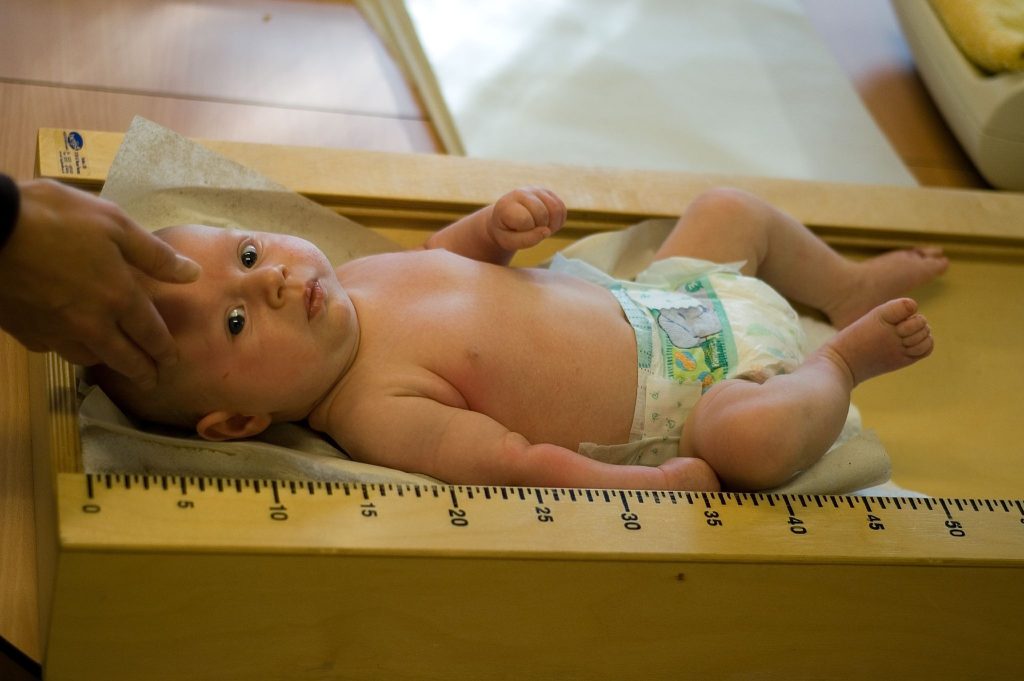
The Brain in the First Two Years
The brain undergoes significant physical changes during the early years of a child’s life. At birth, the brain is only about 25 percent of its adult weight, which is relatively small compared to other organs in the body. However, by age two, it has grown to 75 percent of its adult weight; by age six, it has reached 95 percent. The brain gets its full adult size by the age of seven years.
Although most of the brain’s neurons are present at birth, they are not fully developed. During the next few years, the dendrites, which are the connections between neurons, undergo a period of temporary dramatic growth called transient exuberance. This dramatic increase in dendrites occurs primarily during the first two years of life, resulting in thousands of dendrites for a single neuron by age two. After this period of growth, the neural pathways that are not used will be eliminated, making the ones that are used much stronger. This process primarily occurs in the cortex, the thin outer covering of the brain responsible for voluntary activity and thinking. The prefrontal cortex, located behind the forehead and responsible for regulating emotions, planning activities, strategizing, and judgment, continues to grow and mature throughout childhood and undergoes an additional growth spurt during adolescence. It is the last part of the brain to develop, accounting for 85 percent of the brain’s weight. The connections that are maintained and lost are shaped by experiences. Eventually, 40 percent of these connections will be lost.
Another significant change in the central nervous system is the development of myelin, a coating of fatty tissues around the neuron’s axon. This insulation helps speed up the transmission of impulses from one cell to another, improving the building of neural pathways and coordination and control of movement and thought processes. The development of myelin continues into adolescence but is most dramatic during the first several years of life.
Watch It
This video provides an introduction to how the growth of the brain translates into cognitive abilities in infants.
From Reflexes to Voluntary Movements
Babies develop essential motor skills and movement abilities during the first two years of life. The process begins with developing reflexes, which are involuntary movements in response to different types of stimulation. Some of these reflexes are necessary for survival, such as the breathing reflex, which includes hiccups, sneezing, and thrashing. Other reflexes help maintain body temperature, including crying, shivering, tucking the legs close, and pushing away blankets. The sucking reflex is another important one that allows babies to feed by automatically sucking on any object that touches their lips. Additionally, the rooting reflex helps babies search for a nipple by turning toward any object that touches their cheek.
While some reflexes are essential for survival, others signal the state of brain and body functions. For example, the Babinski reflex makes toes fan upward when feet are stroked, the stepping reflex makes babies move their legs as if to walk when feet touch a flat surface, the palmar grasp makes the infant tightly grasp any object placed in its palm, and the Moro reflex makes babies fling their arms out and then bring them to the chest if they hear a loud noise. These movements occur automatically and sign that the infant is neurologically functioning well.
Within the first few weeks of life, the reflexes are gradually replaced by voluntary movements or motor skills, which are essential for a baby’s growth and development.
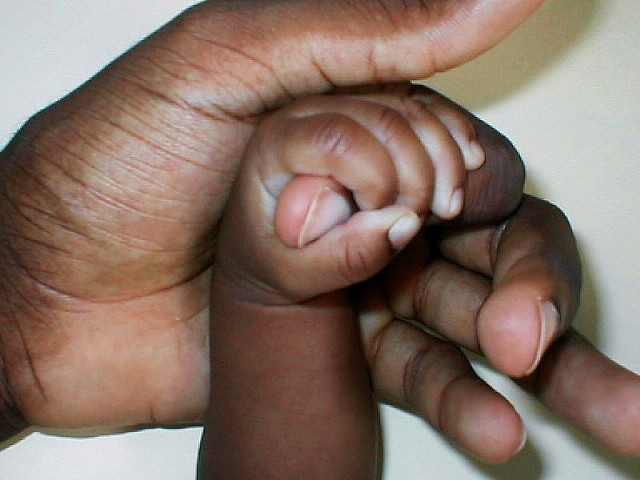
Gross Motor Skills
Gross motor skills refer to voluntary movements involving large muscle groups like the arms, legs, head, and torso. These skills are the first to develop, and examples include lifting the head while lying on the stomach, moving the chest up and down, and rocking back and forth on hands and knees. Additionally, this category of skills also encompasses exploring objects with one’s feet, which many babies do as early as eight weeks of age, especially if seated in a carrier or other device that frees the hips. This may be easier for babies than reaching for objects with their hands, which requires more practice (Berk, 2007). Interestingly, sometimes infants who try to crawl towards an object may move backward due to the greater strength in their arms compared to their legs!
Fine Motor Skills
Developing fine motor skills involves precise hand and finger movements, such as reaching and grasping objects. Initially, newborns cannot grasp objects intentionally, although they wave their arms toward something that catches their attention. At around four months, infants reach for an object, first with both arms and then with one arm. They use their fingers and palms but not thumbs to grasp objects. You can try it yourself. How much control do you have over the object? If you are using a pen or pencil, can you write or draw with it? You may find it challenging to perform these tasks because the thumb is crucial for a pincer grasp, which babies develop around nine months. This new skill significantly improves their ability to control and manipulate objects and brings them great pleasure. By the age of nine months, infants can track a moving object, reach for it, and grasp it, which is a complex set of actions, considering these skills were not present just a few months earlier.
Sensory Development
Vision
The womb is a dark and visually unstimulating environment, meaning newborns have a poorly developed sense of vision at birth. They typically cannot see beyond 8 to 16 inches from their faces, struggle to keep moving objects in their gaze, and are better at detecting contrast than color differences. It takes a lot of cognitive effort for newborns to take in visual stimulation and build neural pathways between their eyes and brains.
When we look at someone, we usually look into their eyes. But newborns don’t scan objects this way. Instead, they focus on less detailed parts of the face, such as the chin. However, by 2 or 3 months of age, they begin to seek out more detailed visual stimulation and show preferences for unusual images over familiar ones, patterns over solids, faces over patterns, and three-dimensional objects over flat photos.
Newborns also have difficulty distinguishing colors, but within a few months, they can discriminate between colors just like adults. They also develop the ability to perceive depth as binocular vision develops at around two months old. By six months, they can even perceive depth in pictures. Infants with crawling and exploration experience tend to pay greater attention to visual cues of depth and modify their actions accordingly.
Hearing
At birth, babies have a keen sense of hearing. This ability to hear develops around the fifth month of prenatal development. Babies can differentiate between similar sounds as early as one month after birth and recognize familiar voices even earlier. As they become more familiar with the sounds of their native language, their sensitivity to sounds that are part of an unfamiliar language decreases. By around 7-8 months, some of this ability to distinguish between sounds may be lost.
Watch It
This video demonstrates an infant’s sense of hearing and vision at birth and shortly after.
Other Senses
Pain and Touch
After babies are born, they are sensitive to touch and temperature and can feel pain, manifested through crying and changes in their cardiovascular system. Touch is a critical sense for infants, and it plays an essential role in their physical development, language, cognitive skills, and socio-emotional competency. Touch is crucial in the short term and has long-term effects, highlighting the significance of upbeat, gentle touch from birth. Babies explore and learn about their environment through touch, form bonds with their caregivers, and communicate their needs and desires. Research has shown the significant benefits of touch for premature babies, but all children can benefit from such contact (Stack, D. M., 2010).
Taste and Smell
Newborns are incredibly receptive to their surroundings and can distinguish between different flavors, such as sour, bitter, sweet, and salty. They tend to prefer sweet tastes. Additionally, they can differentiate between their mother’s scent and that of others, and they find the smell of their mother to be pleasant. A newborn placed on the mother’s chest will instinctively inch up towards the mother’s breast, as it is a potent source of maternal odor. Infants, even on the first day of life, orient themselves to their mother’s scent and are soothed by it when they cry (Sullivan et al., 2011).
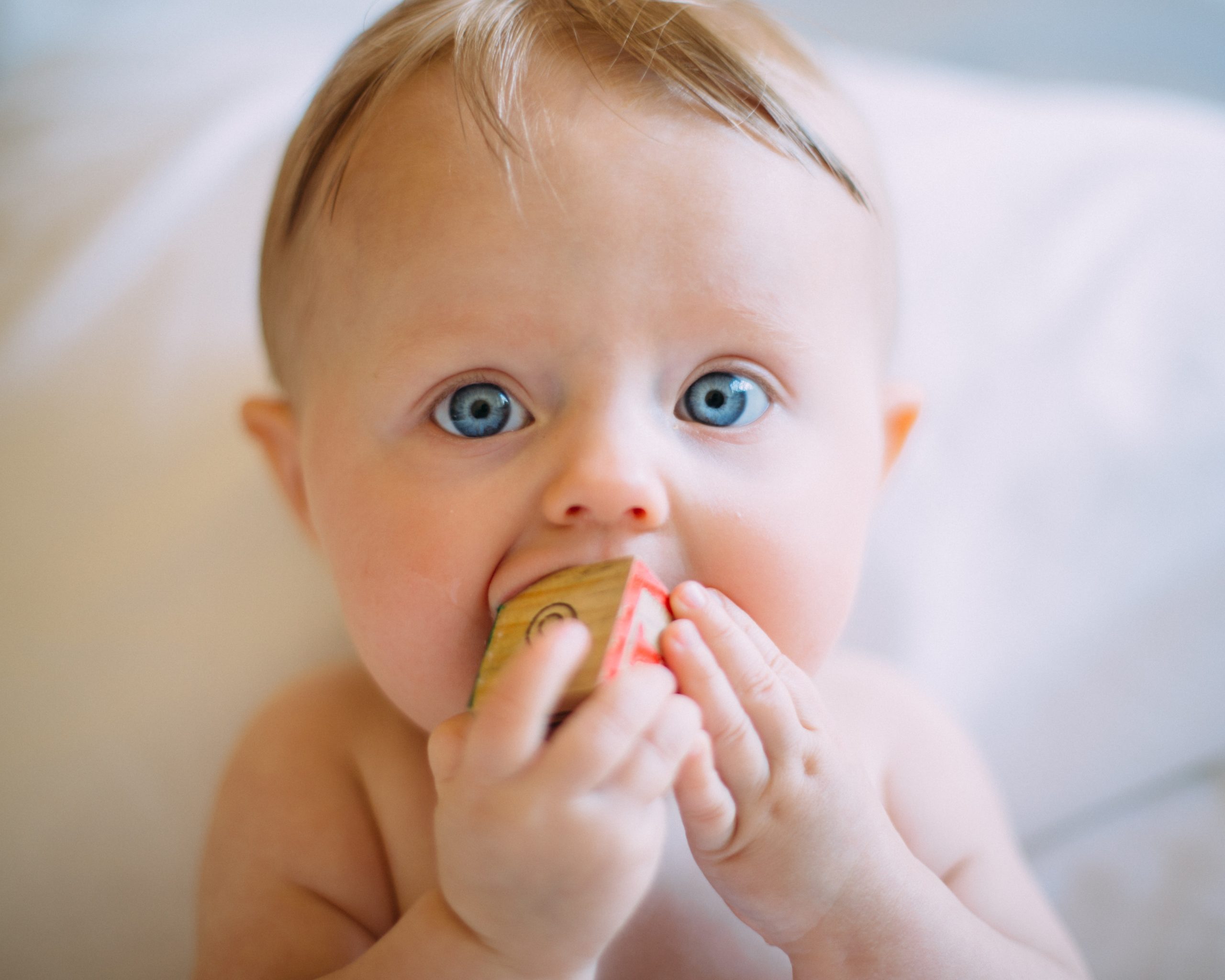
Nutrition
Breast milk is considered the ideal diet for newborns. It has the right amount of calories, fat, and protein to support overall physical and neurological development; it provides a source of iron more easily absorbed in the body than the iron found in dietary supplements; it provides resistance against many diseases; infants more easily digest it than formula; and it helps babies make a transition to solid foods more quickly than if bottle-fed. For all of these reasons, it is recommended that mothers breastfeed their infants until at least six months of age and that breast milk be used in the diet throughout the first year (U.S. Department of Health and Human Services, 2004a in Berk, 2007).
However, most mothers who breastfeed in the United States stop breastfeeding at about 6-8 weeks, often to return to work outside the home. Mothers can continue to provide breast milk to their babies by expressing and freezing the milk to be bottle-fed later or by being available to their infants at feeding time. Still, some mothers find that after the initial encouragement they receive in the hospital to breastfeed, the outside world is less supportive of such efforts. Some workplaces support breastfeeding mothers by providing flexible schedules and welcoming infants, but many do not. And the public support of breastfeeding is sometimes lacking. Women in Canada are more likely to breastfeed than those in the United States, and the Canadian health recommendation is for breastfeeding to continue until two years of age. Facilities in public places in Canada, such as malls, ferries, and workplaces, provide more support and comfort for breastfeeding mothers and children than in the United States.
One early argument given to promote the practice of breastfeeding was that it promoted bonding and healthy emotional development for infants. However, this does not seem to be the case. Breastfed and bottle-fed infants adjust equally well emotionally (Ferguson and Woodward, 1999). This is good news for mothers who may be unable to breastfeed for a variety of reasons and for fathers who might feel left out as a result.
In addition to the nutritional benefits of breastfeeding, breast milk is free! Anyone who has priced formula recently can appreciate this added incentive to breastfeeding. Prices for a month’s worth of formula can easily range from $130-200. Breastfeeding also stimulates uterine contractions to help it regain its standard size. And women who breastfeed are more likely to space their pregnancies further apart.
A Historic Look at Breastfeeding
The use of wet nurses, who were lactating women hired to nurse others’ infants, declined during the Middle Ages. Mothers began breastfeeding their infants more frequently in the late 1800s. However, in the early 20th century, breastfeeding began to decrease again. By the 1950s, middle-class and affluent mothers practiced breastfeeding less frequently as formula became superior to breast milk. In the late 1960s and 1970s, there was a renewed emphasis on natural childbirth and breastfeeding, and the benefits of breastfeeding were more widely publicized. Gradually, breastfeeding rates began to climb, especially among middle-class and educated mothers who received the most vital breastfeeding messages. Today, lactation specialists consult with women before they leave the hospital to ensure they are aware of breastfeeding benefits, receive support and encouragement, and get their infants used to taking the breast. It may not happen immediately; first-time mothers can become upset or discouraged. In such cases, lactation specialists and nursing staff can encourage the mother to keep trying until the baby and mother are comfortable feeding.
Global Considerations and Malnutrition
In the 1960s, formula companies led campaigns in developing countries to encourage mothers to feed their babies on infant formula. Many mothers felt that formula would be superior to breast milk and began using formula. The formula can be used safely with adequate, clean water to mix it and the proper means to sanitize bottles and nipples. However, in many of these countries, such conditions were not available, and babies often were given diluted, contaminated formula, which made them become sick with diarrhea and become dehydrated. Breastfeeding rates declined in Peru from 90 percent to 10 percent in just eight years (Berger, 2001). These conditions continue today, and now many hospitals prohibit the distribution of formula samples to new mothers to get them to rely on breastfeeding. Many of these mothers do not understand the benefits of breastfeeding and have to be encouraged and supported to promote this practice. Breastfeeding could save the lives of millions of infants each year, according to the World Health Organization, yet fewer than 40 percent of infants are breastfed exclusively for the first six months of life. Find out more at the WHO’s ten facts on breastfeeding. Most women can breastfeed unless they are receiving chemotherapy or radiation therapy, have HIV, are dependent on illicit drugs, or have active, untreated tuberculosis.
Children in developing countries and countries experiencing the harsh conditions of war are at risk for two major types of malnutrition. Infantile marasmus refers to starvation due to a lack of calories and protein. Children who do not receive adequate nutrition lose fat and muscle until their bodies can no longer function. Babies who are breastfed are much less at risk of malnutrition than those who are bottle-fed. After weaning, children who have diets deficient in protein may experience kwashiorkor, or the “disease of the displaced child,” often occurring after another child has been born and taken over breastfeeding. This results in a loss of appetite and swelling of the abdomen as the body begins to break down the vital organs as a source of protein.
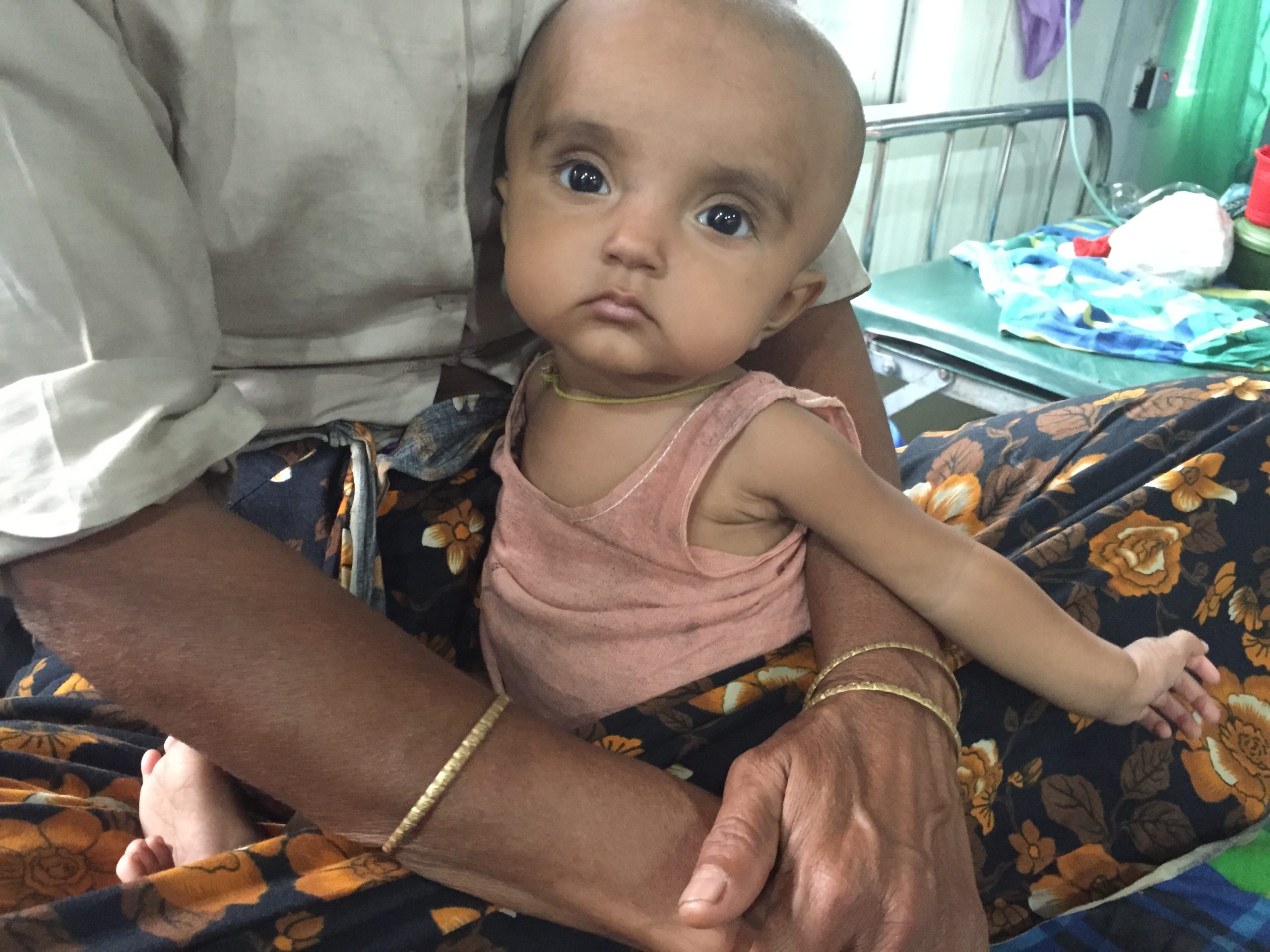
The Breast Milk Industry
The benefits of breast milk are well-known and publicized. The collection and distribution of breast milk has become a million-dollar industry supplying hospitals and others in need of the ideal diet. For more information, go to www.prolacta.com to see a current development in the story of breast milk.
Milk Anemia in the United States
About 9 million children in the United States are malnourished (Children’s Welfare, 1998). More still suffer from milk anemia, a condition in which milk consumption leads to a lack of iron in the diet. This can be due to giving toddlers milk as a pacifier when resting, riding, waking, etc. Appetite declines somewhat during toddlerhood, and a small amount of milk (especially with added chocolate syrup) can quickly satisfy a child’s appetite for many hours. The calcium in milk also interferes with iron absorption in the diet. Many preschools and daycare centers give toddlers a drink after meals to prevent spoiling their appetites.
Sleep
Infant Sleep

Infants 0 to 2 years of age sleep an average of 12.8 hours a day, although this changes and develops gradually throughout an infant’s life. For the first three months, newborns sleep between 14 and 17 hours a day; then, they become increasingly alert for more extended periods. About one-half of an infant’s sleep is rapid eye movement (REM) sleep, and infants often begin their sleep cycle with REM rather than non-REM sleep. They also move through the sleep cycle more quickly than adults. At around six months, babies typically sleep 14-15 hours daily, with 3-4 hours during daytime naps. As they age, these naps decrease from several to typically two naps a day between ages 9-18 months. Often, periods of rapid weight gain or changes in developmental abilities such as crawling or walking will also cause changes to sleep habits.
Cognitive Development
Piaget and Sensorimotor Intelligence
Jean Piaget (1896–1980) is one of the most influential cognitive theorists in development. He was inspired to explore children’s ability to think and reason by watching his own children’s development. Piaget describes intelligence in infancy as sensorimotor or based on direct, physical contact. Infants taste, feel, pound, push, hear, and move to experience the world. Let’s examine infants’ transition from responding to the external world reflexively as newborns to solving problems using mental strategies as two-year-olds. Piaget called this first stage of cognitive development sensorimotor intelligence (the sensorimotor period) because infants learn through their senses and motor skills. He subdivided this period into six substages:
Stage One: Reflexive Action (Birth through 1st month) – This active learning begins with automatic movements or reflexes. A bottle comes into contact with an infant’s cheek and is automatically sucked on and licked. But this also happens with sour lemon, much to the infant’s surprise!
Stage Two: First Adaptations to the Environment (1st through 4th months) – Fortunately, within a few days or weeks, the infant begins to discriminate between objects and adjust responses accordingly as reflexes are replaced with voluntary movements. An infant may accidentally engage in a behavior and find it interesting, such as making a vocalization. This interest motivates trying to do it again and helps the infant learn a new behavior that initially occurred by chance. At first, most actions have to do with the body, but in months, they will be directed more toward objects.
Stage Three: Repetition (4th through 8th months) – During the next few months, the infant becomes more and more actively engaged in the outside world and takes delight in being able to make things happen. Repeated motion brings particular interest as the infant can bang two lids together from the cupboard when seated on the kitchen floor.
Stage Four: New Adaptations and Goal-Directed Behavior (8th through 12th months) – Now, the infant can engage in behaviors that others perform and anticipate upcoming events. Perhaps because of continued maturation of the prefrontal cortex, the infant becomes capable of thinking and carrying out a planned, goal-directed activity, such as seeking a toy that has rolled under the couch. The object continues to exist in the infant’s mind even when out of sight, and the infant can now attempt to retrieve it. This is an example of a lack of object permanence.
Watch It
Was Piaget right? Dr. Rene Baillargeon explains in this clip how infants recognize that objects have permanence at much younger ages, even as young as 3.5 months old.
Stage Five: Active Experimentation of Little Scientists (12th through 18th months) – Infants from one year to 18 months more actively experiment to learn about the physical world. Gravity is comprehended by pouring water from a cup or pushing bowls from highchairs. The caregiver tries to help the child by picking it up again and placing it on the tray. And what happens? Another experiment! The child pushes it off the tray again, causing it to fall, and the caregiver picks it up again! A closer examination of this stage causes us to appreciate how much learning is going on and how many things we take for granted must be learned. I remember handing my daughters (who are close in age) a small container of candy when they were both seated in the car’s back seat. They struggled to move the pieces up and out of the small box and became frustrated when their fingers would lose their grip on the treats before they made it up and out of the top of the boxes. They had not yet learned to use gravity and turn the box over in their hands! This is a beautiful and messy time of experimentation, and most learning occurs by trial and error.
Stage Six: Mental Representations (18th month to 2 years of age) – The child is now able to solve problems using mental strategies, to remember something heard days before and repeat it, to engage in pretend play, and to find objects that have been moved even when out of sight. Take, for instance, the child upstairs in a room with the door closed, supposedly taking a nap. The doorknob has a safety device that makes it impossible for the child to turn the knob. After trying several times in vain to push the door or turn the doorknob, the child carries out a mental strategy to get the door opened and knocks on the door! This is a technique learned from the experience of hearing a knock on the door and observing someone opening the door. The child is now better equipped with mental strategies for problem-solving. This initial movement from the “hands-on” approach to knowing about the world to the more mental world of stage six marked the transition to preoperational intelligence that we will discuss in the next lesson. Part of this stage involves learning to use language.
Language Development
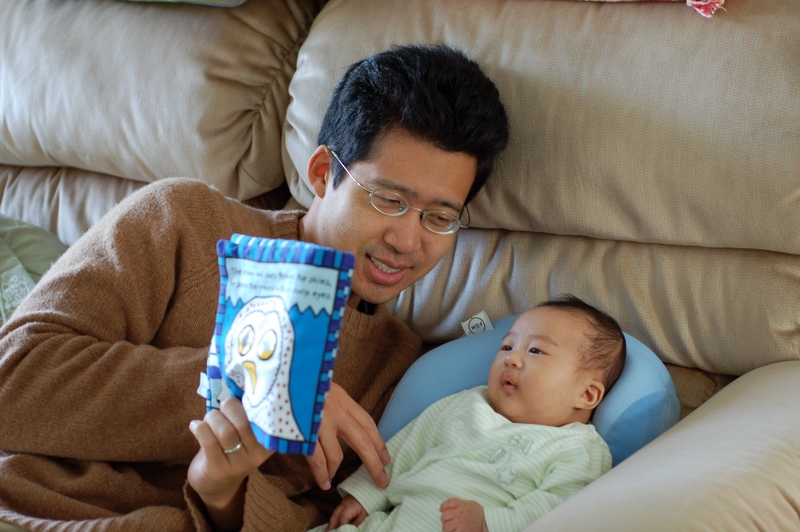
Newborn Communication
Do newborns communicate? Indeed, they do. They do not, however, communicate with the use of language. Instead, they share their thoughts and needs with body posture (relaxed or still), gestures, cries, and facial expressions. A person who spends adequate time with an infant can learn which cries indicate pain and which indicate hunger, discomfort, or frustration.
Intentional vocalizations: Cooing and taking turns: Infants begin to vocalize and repeat vocalizations within the first few months of life. That gurgling, musical vocalization called cooing can serve as a source of entertainment for an infant laid down for a nap or seated in a carrier on a car ride. Cooing serves as practice for vocalization, and the infant hears the sound of their voice and tries to repeat entertaining sounds. Infants also begin to learn the pace and pause of conversation as they alternate their vocalization with someone else and then turn again when the other person’s vocalization has stopped. Cooing initially involves making vowel sounds like “oooo.” Later, consonants are added to vocalizations, such as “nana nana nana.”
Babbling and gesturing: At about four to six months, infants begin making even more elaborate vocalizations, including the sounds required for any language. Guttural sounds, clicks, consonants, and vowel sounds stand ready to equip the child with the ability to repeat whatever sounds are characteristic of the speech heard. Eventually, these sounds will no longer be used as the infant grows more accustomed to a particular language. Deaf babies also use gestures to communicate wants, reactions, and feelings. Because gesturing seems easier than vocalization for some toddlers, sign language is sometimes taught to enhance one’s ability to communicate by using the ease of gesturing. The rhythm and speech pattern is used when deaf babies sign, just as when hearing babies babble.
Understanding: At around ten months, the infant can understand more than they can say. You may have also experienced this phenomenon if you have tried to learn a second language. You may have been able to follow a conversation more easily than to contribute to it.
Holophrastic speech: Children begin using their first words at about 12 or 13 months of age and may use partial words to convey thoughts at even younger ages. These one-word expressions are referred to as holophrastic speech. For example, the child may say “ju” for the word “juice” and use this sound when referring to a bottle. The listener must interpret the meaning of the holophrase, and interpretation is not too difficult when this is someone who has spent time with the child. They know that “ju” means “juice,” which means the baby wants milk! But someone who has not been around the child will have trouble understanding what is intended. Imagine the parent who, to a friend, exclaims, “Ezra’s talking all the time now!” The friend hears only “ju da ga,” which, the parent explains, means “I want some milk when I go with Daddy.”
Under-extension: A child who learns that a word stands for an object may initially think that the word can be used for only that particular object. Only the family’s Irish Setter is a “doggie.” This is referred to as under-extension. More often, however, a child may think that a label applies to all objects similar to the original. In overextension, all animals become “doggies,” for example.
First words and cultural influences: The first words tend to be nouns if the child uses English. The child labels objects such as cups or balls. However, children may learn more verbs in a verb-friendly language like Chinese. This may also be due to the different emphasis on objects based on culture. Chinese children may be taught to notice actions and relationships between objects. In contrast, children from the United States may be introduced to name an object and its qualities (color, texture, size, etc.). These differences can be seen when comparing interpretations of art by older students from China and the United States.
Vocabulary growth spurt: One-year-olds typically have a vocabulary of about 50 words. But by the time they become toddlers, they have a language of about 200 words and begin putting those words together in telegraphic speech (I think of it now as “text message” speech because texting is more common and is similar in that text messages typically only include the minimal amount of words to convey the message).
Two-word sentences and telegraphic (text message?) speech: Words are soon combined, and 18-month-old toddlers can express themselves further by using expressions such as “baby bye-bye” or “doggie pretty.” Words needed to convey messages are used, but the articles and other parts of speech necessary for grammatical correctness are not yet used. These expressions sound like a telegraph (or perhaps a better analogy today would be that they read like a text message) where unnecessary words are not used. “Give baby ball” is used rather than “Give the baby the ball.” Or a “Send money now!” text message rather than “Dear Mother. I need some money to take care of my expenses.” You get the idea.
Child-directed speech: Why is a horse a “horsie”? Have you ever wondered why adults use “baby talk” or sing-song intonation and exaggeration when talking to children? This represents a universal tendency known as child-directed speech, motherese, or parentese. It involves exaggerating the vowel and consonant sounds, using a high-pitched voice, and delivering the phrase with great facial expressions. Why is this done? It may be to clearly articulate the sounds of a word so that the child can hear the sounds involved. Or it may be because when this type of speech is used, the infant pays more attention to the speaker, which sets up a pattern of interaction in which the speaker and listener are in tune with one another. When I demonstrate this in class, the students pay attention and look my way. Amazing! It also works in the college classroom!
Listen to Learn
Parentese occurs across languages and cultures.
Listen to The science is in: Everyone recognizes and uses baby talk with infants for some examples of parentese in English, Mandarin, Hadza, and Nyang’atom.
Theories of Language Development
The first two theories of language development represent two extremes in the level of interaction required for language to occur (Berk, 2007).
Noam Chomsky and the language acquisition device: The view known as nativism advocated by Noam Chomsky suggests that infants are equipped with a neurological construct called the language acquisition device or LAD that prepares infants for language. Language develops as long as the infant is exposed to it. No teaching, training, or reinforcement is required for language to develop.
B. F. Skinner and reinforcement: Learning theorist B. F. Skinner suggests that language develops through reinforcement. Sounds, words, gestures, and phrases are encouraged by following the behavior with words of praise or treats or anything that increases the likelihood that the behavior will be repeated.
Social pragmatics: Another view emphasizes the child’s active engagement in learning a language out of a need to communicate. The child seeks information, memorizes terms, imitates the speech heard from others, and learns to conceptualize using words as language is acquired. Many would argue that all three of these dynamics foster the acquisition of language (Berger, 2004).
Psychosocial Development and Attachment
Emotional Development
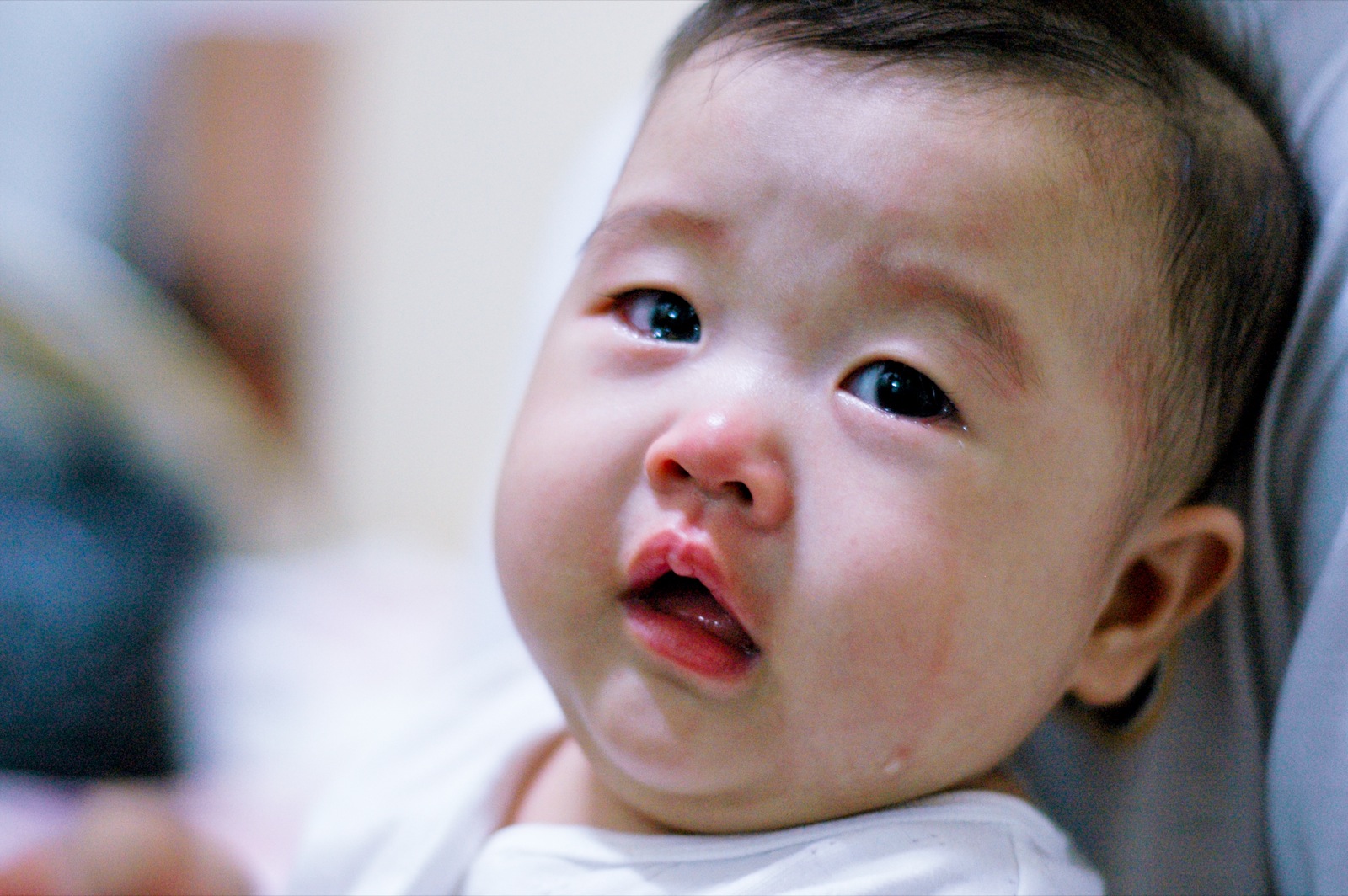
At birth, infants exhibit two emotional responses: attraction and withdrawal. They show attraction to pleasant situations that bring comfort, stimulation, and pleasure. And they withdraw from unpleasant stimulation such as bitter flavors or physical discomfort. At around two months, infants exhibit social engagement in the form of social smiling as they respond with smiles to those who engage their favorable attention. Pleasure is expressed as laughter at 3 to 5 months of age, and displeasure becomes more specific as fear, sadness, or anger between ages 6 and 8 months. This fear is often associated with the presence of strangers or the departure of significant others, known respectively as stranger wariness and separation anxiety, which appear sometime between 6 and 15 months. Some indications indicate that infants may experience jealousy as young as six months (Hart & Carrington, 2002).
During the second year of life, children begin to recognize themselves as they gain a sense of self as an object. This is illustrated in the 15-month-old child’s ability to recognize one’s reflection in a mirror. (The classic mirror or rouge test involves showing a toddler a mirror after secretly rubbing red coloring on the child’s nose. Children younger than 15 months may try to wipe the color from the mirror. But a 15-month-old child may wipe the color from their nose.) Once a child has self-awareness, the child moves toward understanding social emotions such as guilt, shame, embarrassment, sympathy, or empathy. These will require an understanding of the mental state of others that is acquired at around age 3 to 5 and will be explored in our next lesson (Berk, 2007).
Forming Attachments
The significance of early attachments: An attachment is a desire for physical closeness with someone. The formation of attachments in infancy has been the subject of considerable research as attachments have been viewed as foundations for future relationships, as the basis for confidence and curiosity as toddlers, and as essential influences on self-concept.
Measuring attachment styles: The classic model for studying attachment styles involves having a caregiver and child come into a strange room filled with toys and observing the child’s reactions. A securely attached child will play with the toys and bring one to the caregiver to show and describe occasionally. The child is content and secure as they explore the situation. An insecurely resistant child will cling to the caregiver and refuse to go and play. An insecure-avoidant attachment style is indicated by a child who is neither curious nor clingy; instead, the child sits and waits until it is time to go.
Attachment styles vary in the amount of security and closeness felt in the relationship, and they can change with new experiences. The type of attachment fostered in parenting styles varies by culture as well. For example, German parents value independence, and Japanese mothers are typically by their children’s sides. As a result, the rate of insecure-avoidant attachments is higher in Germany, and insecure-resistant attachments are more elevated in Japan. However, these differences reflect cultural variation rather than insecurity (van Ijzendoorn and Sagi, 1999). Keep in mind that methods for measuring attachment styles have been based on a model that reflects middle-class, U.S. values and interpretation. Newer methods for assessing attachment styles involve using a Q-sort technique in which many behaviors are recorded on cards, and the observer sorts the cards in a way that reflects the type of behavior that occurs within the situation.
As we explore attachment styles below, consider how these are evidenced in adult relationships.
Types of Attachments
Secure: A secure attachment is one in which the child feels confident that needs will be met promptly and consistently. In North America, this interaction may include emotional connection and adequate care. However, secure attachments can develop in cultures where mothers do not talk, cuddle, and play with their infants (LeVine et al., 1994). Secure attachments can form provided the child has consistent contact and care from one or more caregivers. Consistency of contacts may be jeopardized if the infant is cared for in a daycare with a high turnover of caregivers or if institutionalized and given little more than primary physical care. And while infants who, perhaps because of being in orphanages with inadequate care, have not had the opportunity to attach in infancy can form initial secure attachments several years later, they may have more emotional problems of depression or anger or be overly friendly as they make adjustments (O’Connor et al., 2003).
Insecure-Resistant: This attachment style is marked by insecurity and resistance to engaging in activities or playing away from the caregiver. It is as if the child fears the caregiver will abandon them and clings accordingly. (Remember that clingy behavior can also be part of a child’s natural disposition or temperament and does not necessarily reflect some parental neglect.) The child may cry if separated from the caregiver and also cry upon their return. They seek constant reassurance that never seems to satisfy their doubt. This type of insecure attachment might result from not meeting needs consistently or timely.
Consequently, the infant is never sure that the world is trustworthy or that they can rely on others without some anxiety. An unavailable caregiver, perhaps because of marital tension, substance abuse, or preoccupation with work, may send a message to the infant they cannot rely on having needs met. A caregiver who attends to a child’s frustration can help teach them to be calm and to relax. However, an infant who receives only sporadic attention when experiencing discomfort may not learn how to calm down.
Insecure-Avoidant: This, too, is an attachment style marked by insecurity. But this style is also characterized by a tendency to avoid contact with the caregiver and others. This child may have learned that needs typically go unmet and understands that the caregiver does not provide care and cannot be relied upon for comfort, even sporadically. An insecure-avoidant child learns to be more independent and disengaged. Such a child might sit passively in a toy room until it is time to go.
Disorganized: This represents the most insecure attachment style and occurs when the child is given mixed, confused, and inappropriate responses from the caregiver. For example, a mother who has schizophrenia may laugh when a child is hurting or cry when a child exhibits joy. The child does not learn to interpret emotions or connect with the unpredictable caregiver.
How common are the attachment styles among children in the United States? It is estimated that about 65 percent of children in the United States are securely attached. Twenty percent exhibit avoidant styles, and 10 to 15 percent are resistant. Another 5 to 10 percent may be characterized as disorganized. How would this compare with adults in the United States? (We will look at this in our lesson on early adulthood.)
Temperament

Perhaps you have spent time with some infants. How were they alike? How did they differ? Or compare yourself with your siblings or other children you have known well. You may have noticed that some seemed in a better mood than others, were more sensitive to noise, or were more easily distracted than others. These differences may be attributed to temperament. Temperament is an inborn quality noticeable soon after birth. According to Chess and Thomas (1996), children vary on nine temperament dimensions. These include activity level, regularity (or predictability), sensitivity thresholds, mood, persistence, or distractibility. The New York Longitudinal Study was a long-term study of infants on these dimensions, which began in the 1950s. Most children do not have their temperament clinically measured, but temperament categories have been developed to help understand and work with children. These categories include easy or flexible, slow to warm up or cautious, complex or aggressive, and undifferentiated (or those who can’t easily be categorized).
Think about how you might approach each type of child to improve your interactions. An easy or flexible child will not need much extra attention unless you want to find out whether they are having difficulties that have gone unmentioned. A slow-to-warm-up child may need to be warned if new people or situations are introduced. A difficult or feisty child may need extra time to burn off their energy. A caregiver’s ability to work well and accurately read the child will enjoy goodness of fit, meaning their styles match, and communication and interaction can flow. Rather than believing that discipline alone will improve children’s behavior, our knowledge of temperament may help a parent, teacher, or other gain insight to work more effectively with a child.
Temperament doesn’t change dramatically as we grow up, but we may learn how to work around and manage our temperamental qualities. Temperament may be one of the things about us that stays the same throughout development.
Psychosocial Development
Erikson’s Stages for Infants and Toddlers
Trust vs. mistrust: Erikson maintained that the first year and a half of life involve establishing trust. Infants are dependent and must rely on others to meet their basic physical needs as well as their needs for stimulation and comfort. A caregiver who consistently meets these needs instills a sense of trust or the belief that the world is a trustworthy place. The caregiver should not worry about overly indulging a child’s need for comfort, contact, or stimulation. This view is in sharp contrast with the Freudian view that a parent who overly indulges the infant by allowing them to suck too long or be picked up too frequently will be spoiled or become fixated at the oral stage of development.
Problems establishing trust: Consider the implications for establishing trust if a caregiver is unavailable or is upset and ill-prepared to care for a child. Or if a child is born prematurely, is unwanted, or has physical problems that make them less desirable to a parent. Unwanted pregnancies can be experienced by busy, upper-middle-class professional couples as well as young, unmarried mothers or couples amid relational strains. Under these circumstances, we cannot assume that the parent will provide the child with a feeling of trust. However, remember that children can also exhibit strong resiliency to harsh circumstances. Resiliency can be attributed to certain personality factors, such as an easy-going temperament and receiving support from others. So, a positive and strong support group can help a parent and child build a strong foundation by offering assistance and positive attitudes toward the newborn and parent.
Autonomy vs. shame and doubt: As the child begins to walk and talk, an interest in independence or freedom replaces a concern for trust. The toddler tests the limits of what can be touched, said, and explored. Erikson believed that toddlers should be allowed to explore their environment as freely as safety permits and, in so doing, will develop a sense of independence that will later grow into self-esteem, initiative, and overall confidence. Suppose a caregiver is overly anxious about the toddler’s actions for fear that the child will get hurt or violate others’ expectations. In that case, the caregiver can tell the child they should be ashamed of their behavior and instill a sense of doubt in their abilities. Parenting advice based on these ideas would be to keep your toddler safe but let them learn by doing. A feeling of pride seems to rely on doing rather than being told how capable one is (Berger, 2005).
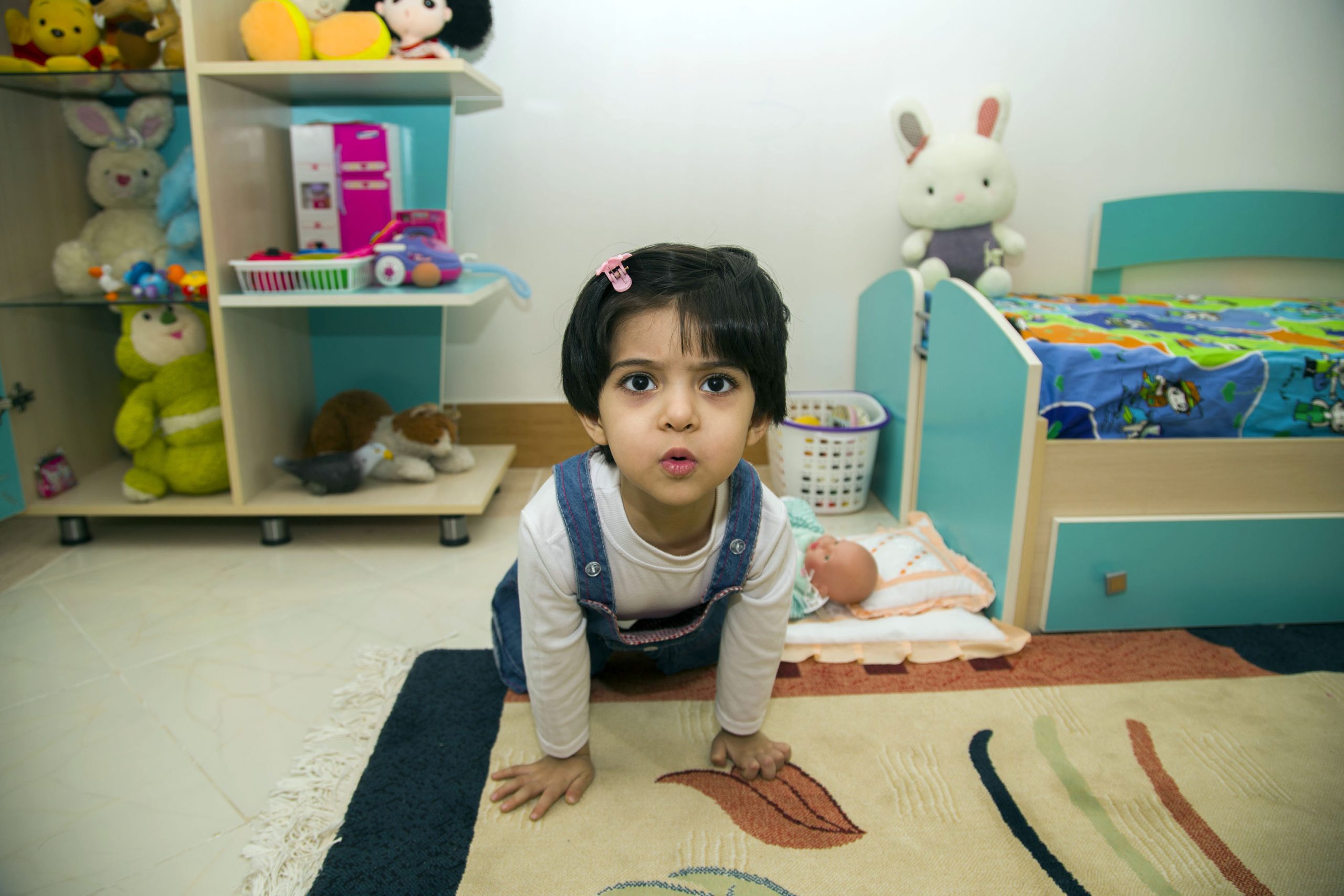
Conclusion
We have explored the dramatic story of the first two years of life. Rapid physical growth, neurological development, language acquisition, the movement from hands-on to mental learning, an expanding emotional repertoire, and the initial conceptions of self and others make this period of life very exciting. These abilities are shaped into more sophisticated mental processes, self-concepts, and social relationships during early childhood.
References
Berger, K. S. (2001). The developing person through the life span. New York: Worth.
Berger, K. S. (2005). The developing person through the lifespan(6th ed.). New York: Worth.
Berk, L. E. (n.d.). Development through the lifespan(4th ed.). Boston: Allyn and Bacon.
Bruer, J. T. (1999). The myth of the first three years: A new understanding of early brain development and lifelong learning. New York: Simon and Schuster.
Chess, S., & Thomas, A. (1996). Temperament: Theory and practice. New York: Brunner/Mazel.
Children’s Welfare. (1998). Welfarem-L Digest, June 25. Retrieved August 10, 2006, from welfare-L@American.edu
Hart, S., & Carrington, H. (2002). Jealousy in 6-month-old infants. Infancy, 3(3), 395-402.
LeVine, R. A., Dixon, S., LeVine, S., Richman, A., Leiderman, P. H., Keefer, C. H., & Brazelton, T. B. (1994). Child care and culture: Lessons from Africa. New York: Cambridge University Press.
O’Connor, T. G., Marvin, R. S., Rotter, M., Olrich, J. T., Britner, P. A., & The English and Romanian Adoptees Study Team. (2003). Child-parent attachment following early institutional deprivation. Development and Psychopathology, 15, 19-38.
Sen, M. G., Yonas, A., & Knill, D. C. (2001). Development of infants’ sensitivity to surface contour information for spatial layout. Perception, 30, 167-176.
Stack, D. M. (2010). Touch and Physical Contact during Infancy: Discovering the Richness of the Forgotten Sense. The Wiley-Blackwell Handbook of Infant Development, 532-567
Sullivan, R., Perry, R., Sloan, A., Kleinhaus, K., & Burtchen, N. (2011). Infant bonding and attachment to the caregiver: insights from basic and clinical science. Clinics in perinatology, 38(4), 643–655. doi:10.1016/j.clp.2011.08.011
Van Ijzendoorn, M. H., & Sagi, A. (n.d.). Cross-cultural patterns of attachment. In J. Cassidy & P. R. Shaver (Eds.), Handbook of attachment: Theory, research, and clinical applications (pp. 713-734). New York: Guilford.
Webb, S. J., Monk, C. S., & Nelson, C. A. (2001). Mechanisms of postnatal neurobiological development: Implications for human development. Developmental Neuropsychology, 19, 147-171.
Attribution
Sections Pain and Touch, Taste and Smell, and Piaget and Sensorimotor minorly adapt content from Lifespan Development by Lumen Learning and adapted by Randa Elgendy, Jenna Ernst, and Michelle Gagnon, licensed under a Creative Commons Attribution 4.0 International License, except where otherwise noted. Infant Sleep minorly adapts content from Sleep and Health from Lifespan Development, licensed under multiple Creative Commons licenses. All remaining content is an adaptation of Developmental Psychology Copyright © by Lumen Learning and Bill Pelz Herkimer. It is licensed under a Creative Commons Attribution 4.0 International License, except where otherwise noted, lightly edited for clarity and to resolve errors, and updated throughout with new images and multimedia.
Media Attributions
- filip-mroz-oko_4WnoM98-unsplash © Filip Mroz is licensed under a CC BY (Attribution) license
- tim-mossholder-MIhOdY-2Fmw-unsplash © Tim Mossholder is licensed under a CC BY (Attribution) license
- The growth curve © maessive is licensed under a CC BY-ND (Attribution NoDerivatives) license
- Got_You_Daddy © Clarence Goss is licensed under a CC BY (Attribution) license
- colin-maynard-CEEhmAGpYzE-unsplash © Colin Maynard is licensed under a CC0 (Creative Commons Zero) license
- A lifeline for undocumented Rohingya refugees in Bangladesh © EU/ECHO/Pierre Prakash is licensed under a CC BY-NC-ND (Attribution NonCommercial NoDerivatives) license
- tim-bish-WbC9XIlQb4k-unsplash © Tim Bish is licensed under a CC BY (Attribution) license
- Reading My New Book © Owen and Aki is licensed under a CC BY-NC-ND (Attribution NonCommercial NoDerivatives) license
- Crying Baby © C.K. Koay is licensed under a CC BY-NC (Attribution NonCommercial) license
- Shyness © Vinoth Chandar is licensed under a CC BY (Attribution) license
- Emotions, Children Girls, هیجان، دختر بچه 08 © Mostafameraji is licensed under a CC BY-SA (Attribution ShareAlike) license

